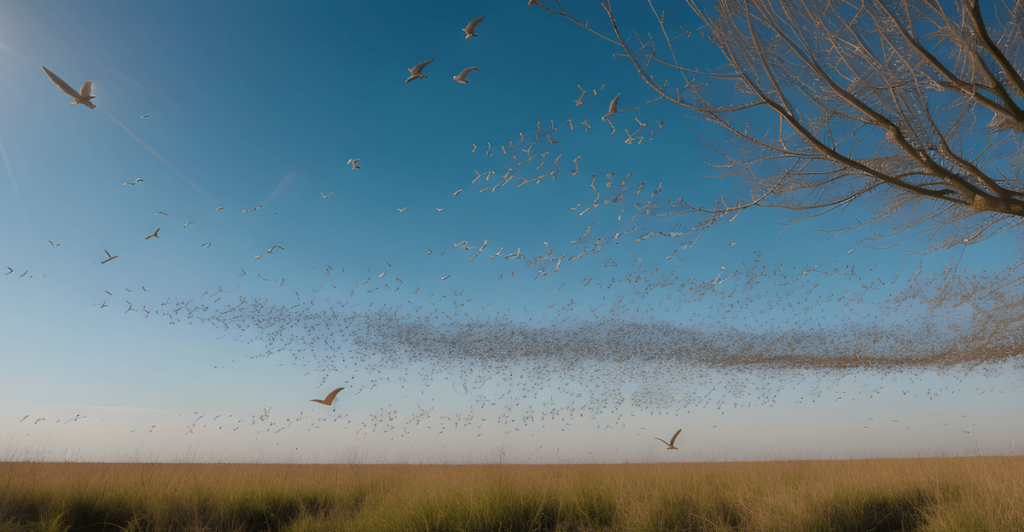Key Takeaways
- Birdshot can be lethal, but its effectiveness depends on various factors such as range, target, and shot placement.
- In self-defense scenarios, birdshots may not provide sufficient stopping power against determined threats, especially at longer ranges.
- While birdshots may have limitations for home defense, it can still be effective at close range and in certain situations.
- The myth of birdshot’s effectiveness as a primary defensive ammunition should be carefully evaluated based on realistic scenarios and ballistic evidence.
- When considering birdshot for safety, it’s crucial to weigh its limitations in stopping threats against its potential for collateral damage and over-penetration.
- Making an informed decision on using birdshots involves understanding its capabilities and limitations while considering alternative ammunition options for self-defense.
Introduction
I’ve always wondered about the lethality of birdshot. The historical context behind its use and the potential damage it can cause has piqued my curiosity. In this post, I’ll delve into whether birdshot is truly lethal, exploring its impact on targets and providing insights into its effectiveness in various scenarios.
Birdshot has a rich history, dating back to early firearms usage for hunting birds. However, its potential lethality in self-defense situations or criminal activities raises important questions. Through this exploration, we’ll uncover the facts surrounding birdshot’s stopping power and its comparison to other types of shotgun ammunition.
Is Birdshot Lethal? Understanding Birdshot and Its Intended Use
Limited Penetration
Birdshots are designed for hunting small birds and clay pigeons. The pellets are smaller compared to other shotgun ammunition, resulting in a wider spread. However, due to its limited penetration power, it’s not typically intended for self-defense.
The limited penetration of birdshots means that it doesn’t have the ability to deeply penetrate targets. When used for hunting small birds or clay pigeons, this feature allows for a wider spread of shots upon firing.
In contrast, when considering self-defense scenarios where stopping power and deep penetration are crucial factors, birdshots may not be as effective. This limitation makes it less lethal in such situations compared to other types of shotgun ammunition with greater penetrating capabilities.
Stopping Power
One important aspect that affects the lethality of birdhots is their stopping power. Due to the smaller size and lower mass of individual pellets in birdshot shells, they do not possess the same kinetic energy as larger projectiles found in buckshot or slugs.
For instance, when fired at an intruder from a distance within a home defense situation, birdshot might cause injury but may not effectively incapacitate the target due to its reduced kinetic impact on the body.
Personal Experience: I remember discussing with a seasoned hunter who emphasized how using birdshot for self-defense could be inadequate because of their limited stopping power. He explained how he always opts for different ammunition specifically meant for personal protection scenarios due to their superior lethality.
Legal Implications
Understanding whether birdshot is lethal also involves considering the legal implications associated with its use. In some jurisdictions, using certain types of ammunition can carry legal consequences based on their perceived lethality and potential collateral damage caused by stray shots.
For example,
- In densely populated urban areas where stray bullets pose significant risks, use buckshot.
- Using high-powered rifle rounds or slugs instead of birdshots. These considerations reflect how various factors influence perceptions about what constitutes lethal force depending on specific contexts and regulations.

Analyzing Birdshot’s Lethal Potential
Distance and Density
The lethality of birdshot hinges on the distance from the target and the density of the shot pattern. At close range, birdshot can cause significant tissue damage and potentially be lethal. The pellets in a dense shot pattern are more likely to hit vital organs or major blood vessels, increasing lethality.
In a scenario where an individual is shot at close range with a birdshot, the human tissue may suffer severe damage due to multiple pellet impacts. This could lead to life-threatening injuries if vital organs are affected by the dense spread of pellets.
Decreasing Effectiveness
As the distance from the target increases, the birdshot’s effectiveness diminishes, reducing its lethality. The energy behind each shot decreases as it travels further, resulting in reduced penetration power into human tissue. Therefore, at longer distances, the ability of birdshot to cause lethal harm significantly decreases.
When using firearms loaded with birdshots for self-defense purposes within a home setting, understanding its effective range is crucial for making informed decisions about personal safety. It’s important to consider that while it may have lethal potential at close quarters due to its impact on human tissue and vital organs when densely packed together in a shot pattern; this potential diminishes as distance increases.
Birdshot in Self-Defense Scenarios
Limited Stopping Power
Using birdhots for self-defense may not provide sufficient stopping power to neutralize an assailant. In a high-stress situation, the spread of birdshot pellets may not effectively incapacitate an attacker. The dispersed pattern of birdshot can cause shallow and non-lethal wounds, failing to stop the threat.
In real-life scenarios, such as home invasions or armed confrontations, the limited penetration of birdshots may fail to incapacitate an attacker effectively. Unlike heavier ammunition like buckshot or slugs, birdshot lack the force needed to stop a determined aggressor. This could potentially put individuals defending themselves at risk if they rely solely on birdshot for protection.
Consideration for Alternative Ammunition
Consideration should be given to alternative types of ammunition with greater stopping power for self-defense purposes. Buckshot or slug rounds are examples of more suitable options that offer deeper penetration and higher impact energy compared to birdshot. These alternatives are better equipped to halt an assailant’s advance and minimize potential harm in a defensive scenario.
It is crucial to prioritize effectiveness over convenience when selecting ammunition. While bird shot might be useful for hunting small game or skeet shooting, its efficacy in life-threatening situations is questionable due to its limited ability to incapacitate attackers.
The Reality of Birdshot for Home Defense
Over-Penetration Risk
Using birdhots for home defense can raise concerns about over-penetration. This means that the shot pellets may travel through the intended target and potentially cause harm to unintended individuals or property. In a residential setting, this is a significant concern as it could lead to severe consequences.
For example, if an individual were to use birdshot in a home defense scenario and miss their target, there is a risk of the pellets traveling through walls and endangering others in adjacent rooms or neighboring properties. This highlights the critical importance of considering shot ammunition options carefully when preparing for home defense situations.
In my experience, understanding the potential risks associated with using birdshot indoors has led me to explore alternative ammunition types that offer more controlled penetration while still effectively neutralizing threats.
Limited Barrier Penetration
One advantage of birdshot in home defense scenarios is their limited ability to penetrate barriers such as walls. Unlike other types of shotgun shells, birdshot tend to lose their energy more quickly after impact with solid surfaces. This reduced shot penetration capability can help minimize collateral damage within confined spaces like homes where family members or neighbors might be nearby.
For instance, if an individual were forced into a situation where they needed to discharge their firearm inside their house, birdshot’s limited barrier penetration could potentially reduce the risk of harming innocent bystanders on the other side of walls or doors.
Based on my personal research into different shotgun ammunitions suitable for home defense purposes, I’ve found that understanding each type’s unique characteristics provides valuable insight into making informed decisions about which option best suits specific needs.
Weighing Risks and Benefits
When considering utilizing birdshot for home defense, homeowners need to carefully evaluate both its advantages and drawbacks. While it offers reduced over-penetration risks compared to some other ammunition types commonly used for self-defense purposes, it also comes with limitations regarding effective range and stopping power against determined intruders.
It’s crucial for individuals preparing for potential defensive scenarios at home to weigh these factors thoughtfully before deciding on using birdshot as their primary choice of ammunition. Understanding how placement reigns supreme when employing any firearm within close quarters has been pivotal in shaping my approach to selecting appropriate tools for safeguarding my household.

Close Range Dynamics of Birdshot Effectiveness
Lethality at Close Range
At close range, the concentrated impact of multiple pellets from birdshot can cause severe and potentially lethal injuries. The dense pattern of shot creates devastating wounds, especially when aimed at the center mass. This makes it crucial to understand the potential lethality of birdshot in defensive scenarios.
The effectiveness of birdshot at close range is attributed to its ability to create a dense and widespread pattern upon discharge. This results in a high likelihood of hitting vital organs or major blood vessels, leading to life-threatening injuries from a shot. For example, within a home defense situation where an intruder is within a few yards, firing birdshot can have catastrophic consequences due to its lethal potential.
Understanding the effective range of birdshot is essential for evaluating its suitability for self-defense purposes. At close distances, typically within 7-10 yards, the shot spread pattern remains tight enough to cause significant tissue damage while still retaining lethal force. Therefore, individuals considering using birdshot for self-defense must comprehend that even at relatively short distances, it has the capacity to be deadly.
Defensive Scenarios Considerations
When assessing whether birdshot is appropriate for defensive use in confined spaces such as homes or buildings, one must carefully consider its lethal capabilities at close range encounters. In situations involving home defense where overpenetration poses a significant risk due to proximity with neighbors or family members in adjacent rooms or properties, utilizing birdshots may seem appealing due to its reduced penetration through walls compared to other types of ammunition.
However, I believe that despite this advantage related to overpenetration concerns associated with other ammunitions like slugs or buckshot; it’s important not to lose sight of how deadly it can be when used against an intruder within close quarters.
Furthermore, I think that given these considerations about lethality and effectiveness at close ranges, shots are imperative when making decisions regarding firearm selection for home defense purposes.
The Myth vs. Fact of Birdshot’s Lethality
Understanding Birdshot Lethality
Birdshot often underestimated for its lethality, can indeed be lethal at close distances and particularly within confined spaces. This popular misconception surrounding birdshot’s effectiveness in causing harm has led to the belief that it is incapable of inflicting serious injuries or fatalities under certain circumstances. However, this myth needs to be dispelled as birdshot pellets have the potential to cause significant damage when discharged from a firearm.
When fired from a shotgun, birdshot pellets spread out over a wider area compared to other types of ammunition. Despite being smaller in size than buckshot or slugs, at close range, these tiny pellets can penetrate deeply into the body and cause severe internal injuries. In confined spaces such as homes or buildings, where encounters are likely to occur at short distances, the lethal capabilities of birdshot become more pronounced.
Factors Affecting Lethality
The lethality of birdshot is influenced by various factors including distance, shot placement, and individual susceptibility. At extremely close ranges—typically within 10 yards—the concentrated impact of multiple shot pellets hitting a target simultaneously can result in devastating consequences. While some argue that birdshots may not always be lethal due to its limited penetration beyond superficial tissue layers at longer distances, it remains crucial to acknowledge their potential for causing fatal injuries under specific conditions.
In my experience with firearms training and safety courses, I’ve come across instances where individuals have dismissed the lethal nature of birdshot based on misconceptions about its effectiveness. Gun owners and enthusiasts alike need to understand that while different types of ammunition serve distinct purposes ranging from hunting to self-defense scenarios; dismissing the lethality of birdshot entirely could lead to grave misunderstandings about its real-world implications.

Dispelling Myths for Informed Decision Making
Differentiating between myths and facts concerning birdshot‘s lethality is paramount in making well-informed decisions regarding its use in various situations. As much as it is essential to recognize that certain factors determine its level of lethality—it should never be discounted as non-lethal altogether.
Evaluating the Risks of Using Birdshot in Defensive Situations
Potential Inadequate Stopping Power
Using birdshot for defense may result in potential inadequate stopping power against determined attackers. This is due to the smaller size of the individual shot pellets, which may not penetrate deeply enough to incapacitate an assailant effectively. While birdshots can cause serious injuries at close range, its effectiveness diminishes as the distance from the target increases.
In defensive situations, reliance on birdshots can lead to increased vulnerability because it cannot incapacitate threats effectively. Unlike heavier and denser loads like buckshot or slugs, birdshot has limited penetration and may not have sufficient force to stop an aggressor decisively.
I remember discussing with a firearms expert who emphasized that while birdshot might be suitable for hunting small game or recreational shooting, it’s generally not recommended for self-defense purposes due to its reduced stopping power and penetration capabilities.
Careful Consideration of Limitations
Evaluating the risks involved in using birdshot requires careful consideration of its limitations in defensive scenarios. The spread pattern of birdshot means that at longer distances, only a few pellets might hit the intended target, reducing its effectiveness as a defensive load. If multiple assailants are present or if there are innocent bystanders nearby, birdshot’s wide dispersion could pose significant safety concerns.
When considering using birdshot for self-defense, it’s crucial to weigh these limitations against other available options such as buckshot or slugs which offer deeper penetration and greater stopping power. It’s important to understand that while birdshot is less likely than other loads to over-penetrate walls and potentially harm unintended targets indoors, this advantage comes with trade-offs in terms of stopping capability outside very close ranges.
Overall I’ve learned that when choosing ammunition for self-defense purposes, it’s essential to prioritize rounds specifically designed for personal protection rather than repurposing loads meant primarily for hunting or sports shooting.
Birdshot’s Limitations in Stopping Threats
Penetration and Stopping Power
Birdshot’s limited penetration can be a concern when dealing with determined threats, especially those wearing heavy clothing or body armor. The reduced kinetic energy and penetration capabilities of birdshot may not cause enough damage to decisively halt aggressive individuals.
In real-life defensive situations, it is crucial to understand the limitations of birdshots in stopping threats effectively. When evaluating ammunition options for self-defense, one must consider whether birdshots can deliver the necessary stopping power to neutralize a threat.
While birdshots may be suitable for certain scenarios, such as close-range encounters where overpenetration is a concern, their limitations become evident when facing adversaries who are heavily protected or highly motivated.
Defensive Use Considerations
When assessing the suitability of birdshot for defensive use, it is essential to weigh their pros and cons carefully. While the spread pattern of birdshot can cover a wider area at close range, increasing the likelihood of hitting an aggressor, this advantage must be balanced against its reduced ability to penetrate deeply into tissue.
In some cases, law enforcement agencies have specific guidelines regarding the use of birdshots for crowd control or riot situations due to their potential effectiveness within confined spaces while minimizing collateral damage risks. However, these considerations do not necessarily translate directly into personal defense scenarios where decisive stopping power is paramount.
Personal experience and expert guidance play vital roles in understanding how different types of ammunition perform in various defensive situations. Seeking advice from firearms instructors and professionals with practical experience can provide valuable insights into choosing suitable ammunition based on individual needs and circumstances.

Making an Informed Decision on Birdshot for Safety
Advantages of Using Birdshot
Birdshot offers some advantages. Unlike larger ammunition, birdshots is less likely to penetrate walls, which reduces the risk of injuring unintended targets. This makes it a suitable choice for individuals living in densely populated areas or shared living spaces. At close range, birdshots can create a wider spread pattern, increasing the chances of hitting an intruder and minimizing the need for precise aiming.
In terms of personal experience with birdshot usage, I’ve learned that its reduced penetration power can be beneficial in scenarios where over-penetration poses a significant risk. For instance, in apartment buildings or homes with thin walls, using birdshots as opposed to buckshot or slugs can help prevent collateral damage.
On the other hand…
Disadvantages of Using Birdshot
One major drawback of utilizing birdshots for self-defense is their limited stopping power compared to heavier loads like buckshot or slugs. At longer distances or against heavily clothed assailants, bird shots may not effectively incapacitate an intruder. Moreover, while its reduced wall-penetration capability is advantageous indoors, this very characteristic limits its effectiveness in outdoor settings where deeper penetration might be necessary.
From my own research and conversations with firearm experts and instructors on online forums like itrader and PM member join date communities have highlighted how important it is to consider individual needs and potential risks when choosing ammunition for safety purposes.
When considering scientific testing data on various shotgun loads’ performance under different conditions (such as distance from target), it becomes evident that there are specific limitations associated with using birdshots for self-defense compared to other types of ammunition.
Conclusion
So, is birdshot lethal? After delving into the various aspects of birdshot’s effectiveness and limitations, it’s clear that while birdshots can be lethal at close range, its overall stopping power and effectiveness in self-defense scenarios are questionable. Understanding the risks and dynamics of using birdshots is crucial for making an informed decision on their suitability for personal safety.
As we weigh the pros and cons of birdshots, it’s essential to prioritize safety and effectiveness. The reality of birdshot’s limited stopping power should prompt us to explore alternative ammunition options for home and self-defense. Making informed choices based on a comprehensive understanding of Birdshot’s capabilities is paramount in ensuring personal safety and security.
Frequently Asked Questions
Is birdshot lethal at close range?
Yes, birdshots can be lethal at close range. At very close distances, the concentrated impact of multiple pellets can cause significant damage to vital organs and tissues.
What are the limitations of using birdshots for self-defense?
Birdshots may not effectively stop an assailant due to its limited penetration and spread pattern. It’s crucial to consider the potential risks and ensure you’re making an informed decision for your safety.
How effective is birdshot in stopping threats?
While birdshots can incapacitate or deter threats at close ranges, their effectiveness diminishes with distance. Understanding its limitations and considering other options is essential for personal defense strategies.
Can I rely on a birdshot for home defense?
Using birdshots for home defense comes with significant considerations. Its limited penetration may not fully stop intruders, so it’s important to weigh the risks versus benefits when choosing defensive ammunition.
What factors should I consider when evaluating the use of birdshots in defensive situations?
Consider factors such as your living environment, potential legal implications, understanding local laws, and shot regarding firearm use in self-defense scenarios. Making an informed decision involves weighing various aspects beyond just lethality.
